Have you ever stumbled upon a succulent that catches your eye, but you’re not quite sure how to care for it? You’re not alone! In this comprehensive guide to Sedum treleasei, we’ll provide you with all the information you need to know about this beautiful plant. From its preferred soil and watering needs to its lighting requirements, we’ll cover everything you need to know to keep yours healthy and thriving. So, whether you’re a beginner or an experienced gardener, this guide has got you covered.

Dig in!
What is Sedum Treleasei?
Sedum treleasei is a beautiful succulent known for its powdery blue-green leaves and stunning rosette-like appearance. This plant is native to Puebla, Mexico. The leaves are nice and chubby… and I do love me a chubby succulent.
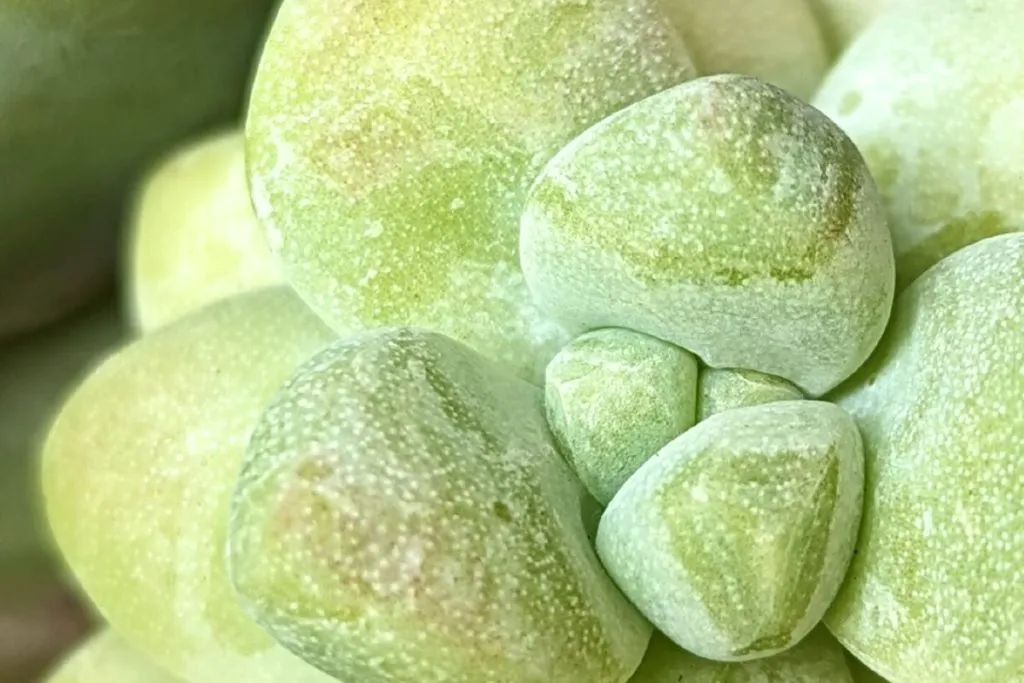
Caring for Sedum Treleasei
Now that you know what Sedum treleasei is, let’s explore how to care for it properly to ensure it thrives in your home or garden.
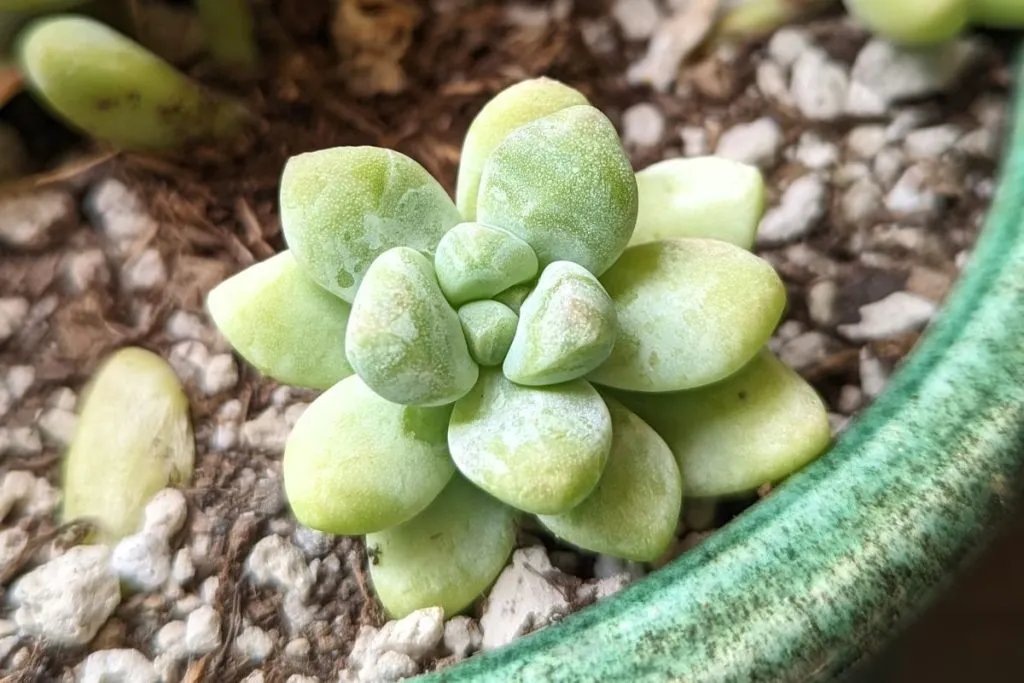
Light Requirements
Like most succulents, Sedum treleasei enjoys plenty of sunlight. Aim for six to eight hours of bright, indirect light daily. If you’re growing it indoors, placing it near a south or east-facing window will provide the necessary light.
Watering
One of the most crucial aspects of caring for Sedum treleasei is proper watering. But how often should you water, and how can you tell if you’re overwatering?
Frequency
It’s best to water Sedum treleasei using the “drench and dry” method. This means thoroughly soaking the soil and then allowing it to dry out completely before watering again. Typically, this equates to watering every 7-10 days in the summer and every 2-3 weeks during the winter.
Signs of Overwatering
Overwatering is a common issue for succulent owners. If you notice yellowing leaves, mushy stems, or a foul smell coming from the soil, it may be a sign that you’re giving your Sedum treleasei too much water.
Soil
When it comes to soil, Sedum treleasei prefers a well-draining mixture. A cactus or succulent soil mix combined with perlite or coarse sand is ideal. This will ensure that your plant doesn’t sit in wet soil for too long, which can lead to root rot.
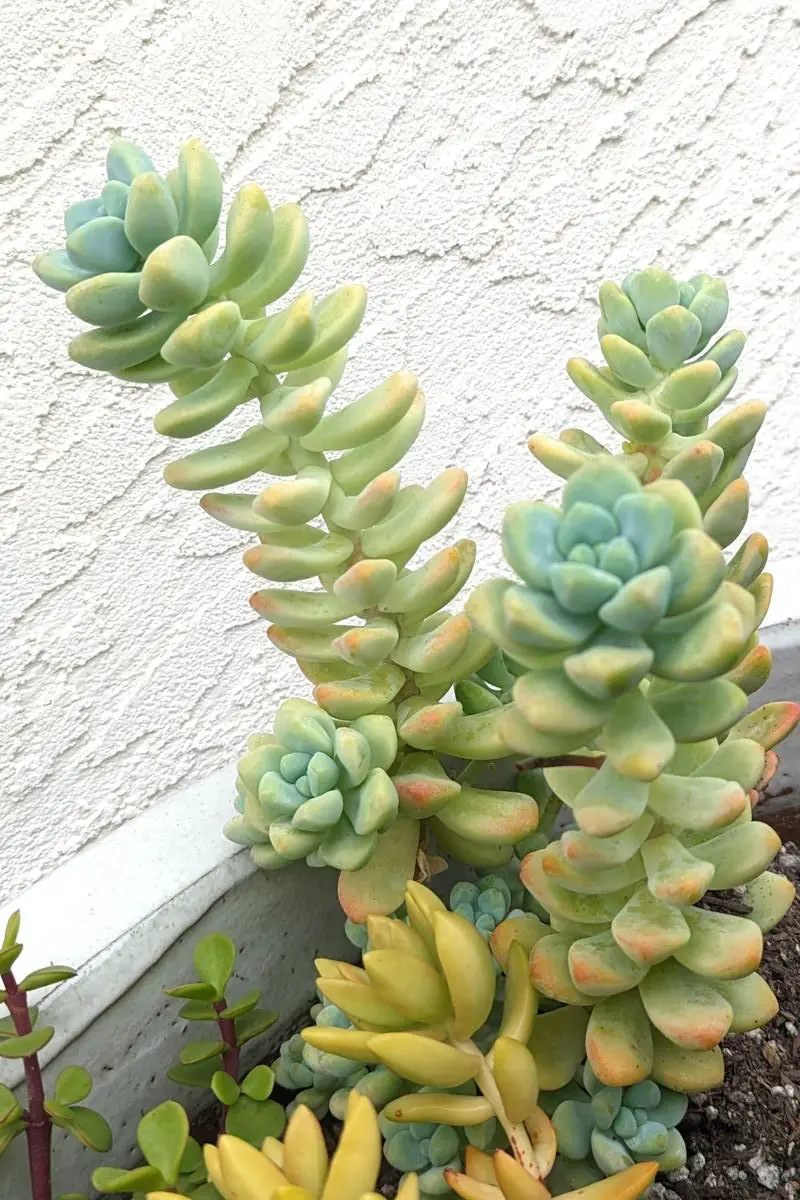
Growth Rate and Size
Now that you know how to care for your Sedum treleasei, let’s discuss its growth rate and size.
Growth Rate
It is a relatively slow-growing succulent. With proper care, you can expect it to grow at a moderate pace, reaching its full size within a few years.
Size
At maturity, Sedum treleasei can reach up to 12 inches tall and 24 inches wide. This makes it a great option for ground cover or as a standout plant in a succulent arrangement.
Spread
As it grows, it tends to spread outwards, creating a beautiful carpet-like appearance. This succulent can spread up to 24 inches, making it a fantastic option for filling in empty spaces or landscape beds.
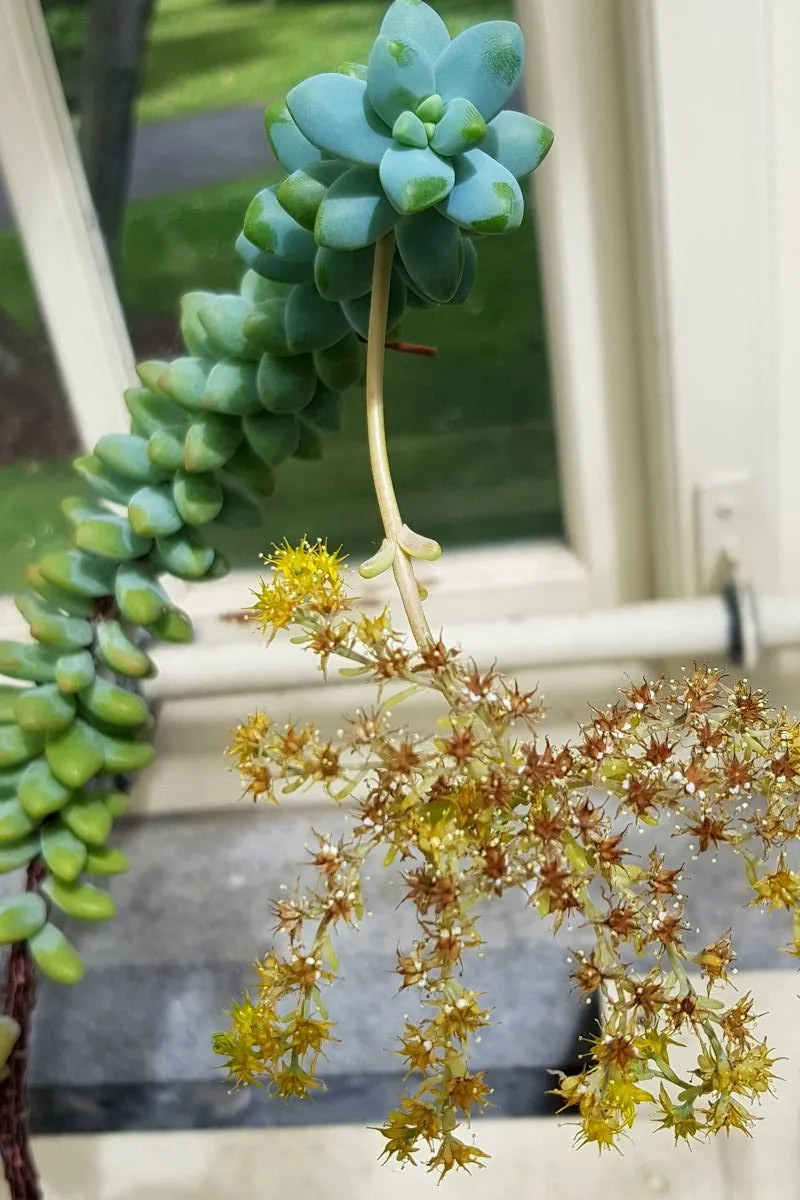
Blooming
One of the most exciting aspects of growing Sedum treleasei is its blooming habits.
Frequency
It typically blooms once a year, usually during the spring or summer months.
Flowers
When in bloom, it produces lovely yellow flowers that contrast beautifully with its blue-green foliage. The flowers of this plant have 5 petals and are bright yellow. They are attached near the base and are shaped like a lance or egg. The tips are rounded or pointed and have a very short point. The sepals (small leaves under the petals) are free at the bottom and unequal in size. They are shaped like a long, narrow oval and are about 3-5 millimeters long. The filaments (thin stalks that hold up the anthers) and anthers (part of the flower that produces pollen) are also yellow.
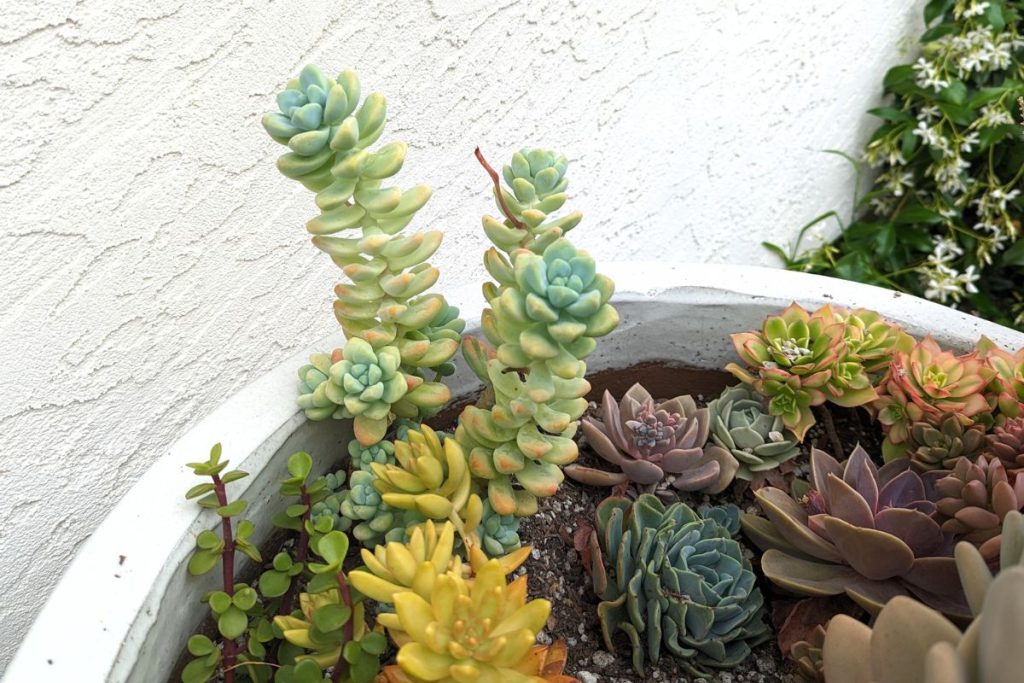
Sedum Treleasei Problems
Like any plant, Sedum treleasei can encounter a few issues. Let’s discuss some common problems, along with prevention and treatment tips.
Common Issues
The main problems you may face when caring for Sedum treleasei include overwatering, underwatering, and pest infestations such as mealybugs, aphids, and spider mites.
Prevention and Treatment
To prevent overwatering, follow the watering guidelines mentioned earlier in this article. If your plant is suffering from underwatering, increase the frequency of watering slightly. For pest infestations, remove any affected leaves or stems and treat the plant with insecticidal soap or neem oil.

Propagation
If you’re looking to expand your Sedum treleasei collection or share this beautiful succulent with friends, propagation is the way to go. There are two primary methods: leaves and stem cuttings.
Leaves
To propagate Sedum treleasei using leaves, gently remove a healthy leaf from the plant, allowing it to callous over for a day or two. Then, place the calloused end on top of well-draining soil and mist periodically. In a few weeks, you’ll see new roots and growth.
Stem Cuttings
Another way to propagate Sedum treleasei is through stem cuttings. Cut a healthy stem from the plant, let it callous for a day or two, and then place it into well-draining soil. Water sparingly until new roots develop, then resume regular watering.

Hardiness Zone
This chunky beauty thrives in USDA hardiness zones 9 through 11. If you live in a colder climate, consider growing your plant in a container and bringing it indoors during the winter months to protect it from frost.
In conclusion, Sedum treleasei is a stunning succulent that’s perfect for both beginners and seasoned hobbyists. With its eye-catching appearance and relatively easy care requirements, there’s no doubt that this Powdery Stonecrop will become a cherished addition to your succulent collection. By following the tips and guidelines outlined in this comprehensive guide, you’ll be well on your way to growing a healthy, thriving Sedum treleasei. So, what are you waiting for? It’s time to embark on your Sedum treleasei journey!


